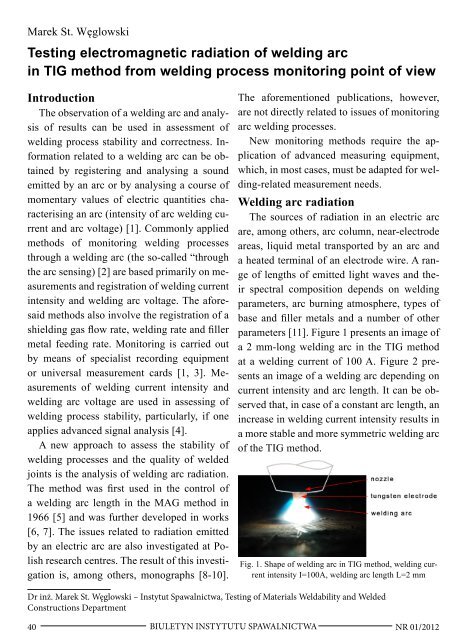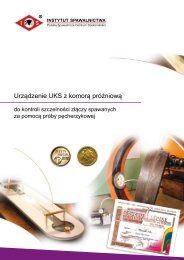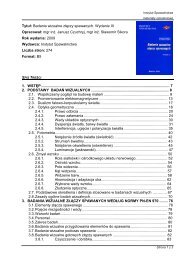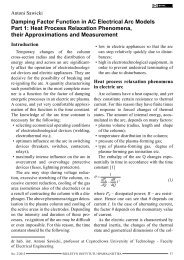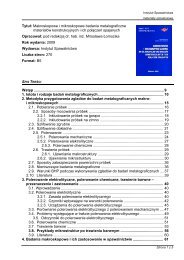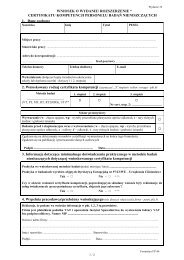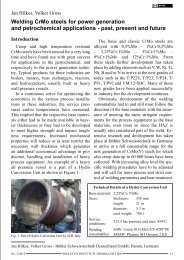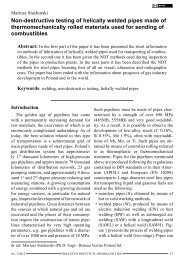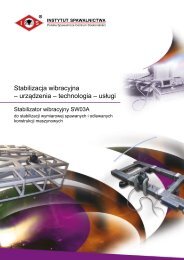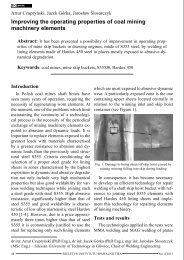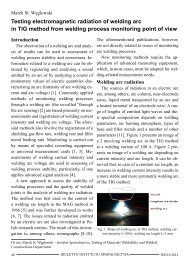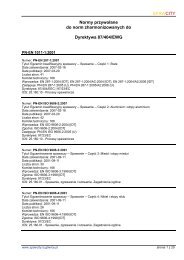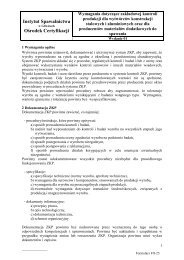Biuletyn Instytutu Spawalnictwa No. 01/2012
Biuletyn Instytutu Spawalnictwa No. 01/2012
Biuletyn Instytutu Spawalnictwa No. 01/2012
Create successful ePaper yourself
Turn your PDF publications into a flip-book with our unique Google optimized e-Paper software.
Marek St. Węglowski<br />
Testing electromagnetic radiation of welding arc<br />
in TIG method from welding process monitoring point of view<br />
Introduction<br />
The observation of a welding arc and analysis<br />
of results can be used in assessment of<br />
welding process stability and correctness. Information<br />
related to a welding arc can be obtained<br />
by registering and analysing a sound<br />
emitted by an arc or by analysing a course of<br />
momentary values of electric quantities characterising<br />
an arc (intensity of arc welding current<br />
and arc voltage) [1]. Commonly applied<br />
methods of monitoring welding processes<br />
through a welding arc (the so-called “through<br />
the arc sensing) [2] are based primarily on measurements<br />
and registration of welding current<br />
intensity and welding arc voltage. The aforesaid<br />
methods also involve the registration of a<br />
shielding gas flow rate, welding rate and filler<br />
metal feeding rate. Monitoring is carried out<br />
by means of specialist recording equipment<br />
or universal measurement cards [1, 3]. Measurements<br />
of welding current intensity and<br />
welding arc voltage are used in assessing of<br />
welding process stability, particularly, if one<br />
applies advanced signal analysis [4].<br />
A new approach to assess the stability of<br />
welding processes and the quality of welded<br />
joints is the analysis of welding arc radiation.<br />
The method was first used in the control of<br />
a welding arc length in the MAG method in<br />
1966 [5] and was further developed in works<br />
[6, 7]. The issues related to radiation emitted<br />
by an electric arc are also investigated at Polish<br />
research centres. The result of this investigation<br />
is, among others, monographs [8-10].<br />
The aforementioned publications, however,<br />
are not directly related to issues of monitoring<br />
arc welding processes.<br />
New monitoring methods require the application<br />
of advanced measuring equipment,<br />
which, in most cases, must be adapted for welding-related<br />
measurement needs.<br />
Welding arc radiation<br />
The sources of radiation in an electric arc<br />
are, among others, arc column, near-electrode<br />
areas, liquid metal transported by an arc and<br />
a heated terminal of an electrode wire. A range<br />
of lengths of emitted light waves and their<br />
spectral composition depends on welding<br />
parameters, arc burning atmosphere, types of<br />
base and filler metals and a number of other<br />
parameters [11]. Figure 1 presents an image of<br />
a 2 mm-long welding arc in the TIG method<br />
at a welding current of 100 A. Figure 2 presents<br />
an image of a welding arc depending on<br />
current intensity and arc length. It can be observed<br />
that, in case of a constant arc length, an<br />
increase in welding current intensity results in<br />
a more stable and more symmetric welding arc<br />
of the TIG method.<br />
Fig. 1. Shape of welding arc in TIG method, welding current<br />
intensity I=100A, welding arc length L=2 mm<br />
Dr inż. Marek St. Węglowski – Instytut <strong>Spawalnictwa</strong>, Testing of Materials Weldability and Welded<br />
Constructions Department<br />
40 BIULETYN INSTYTUTU SPAWALNICTWA<br />
NR <strong>01</strong>/2<strong>01</strong>2


